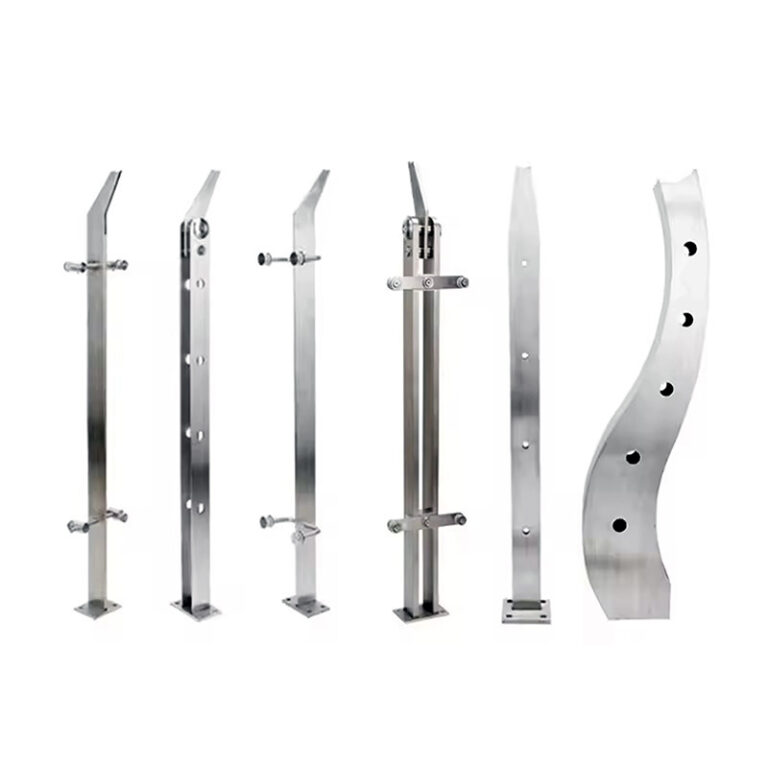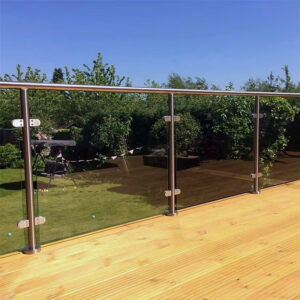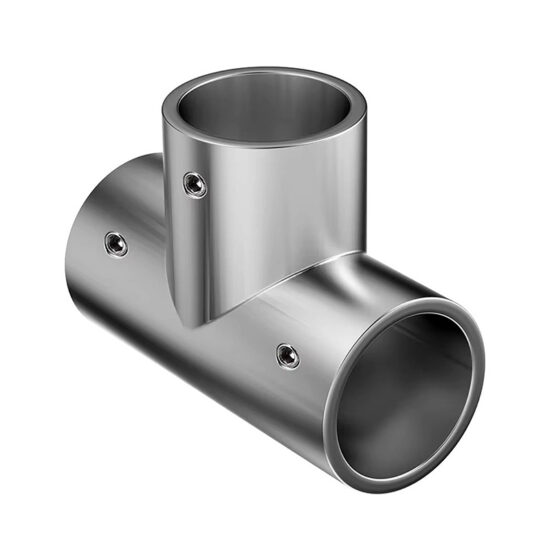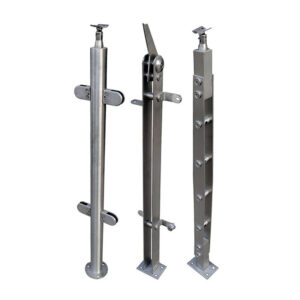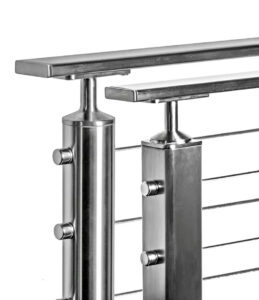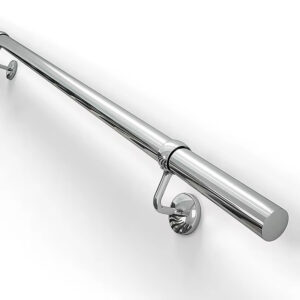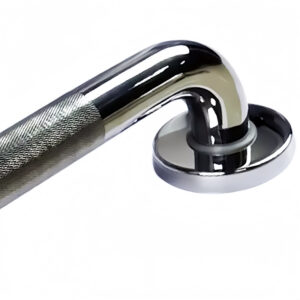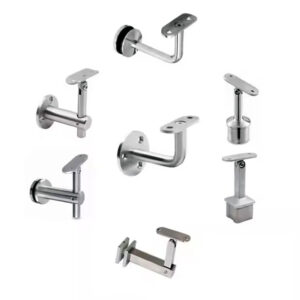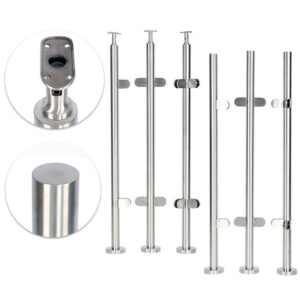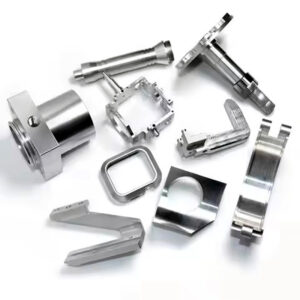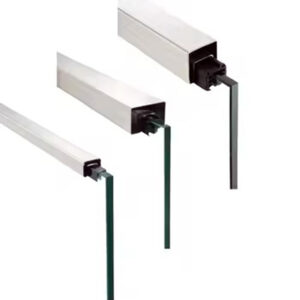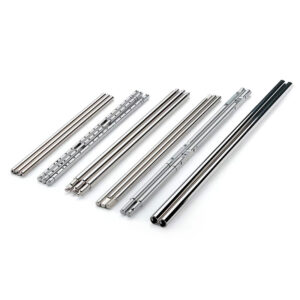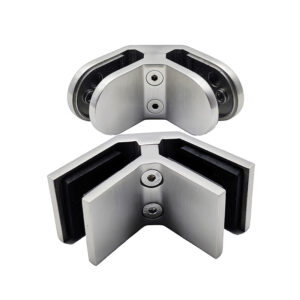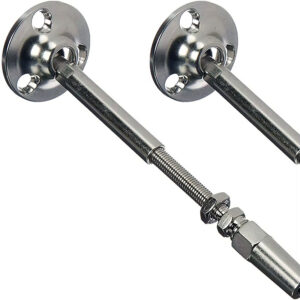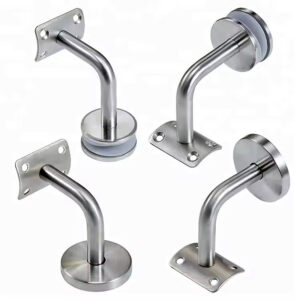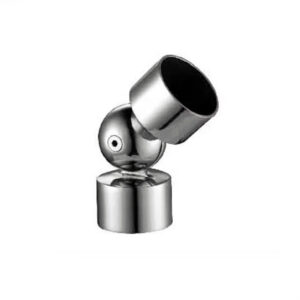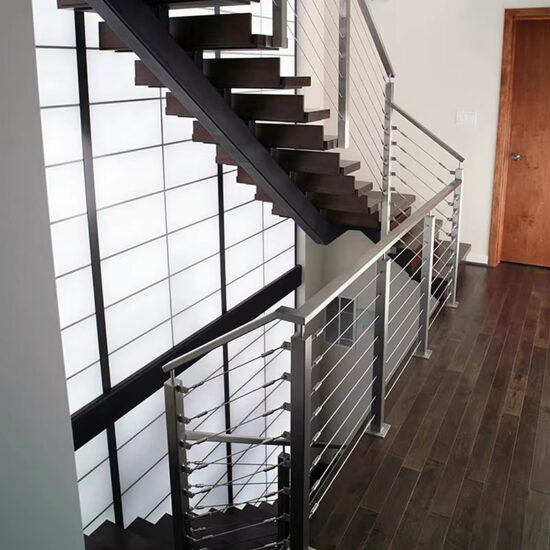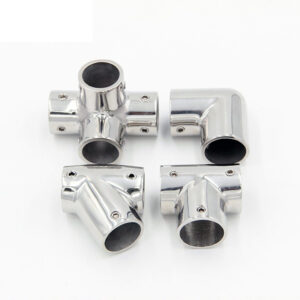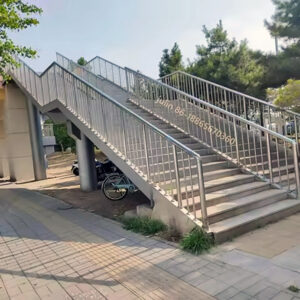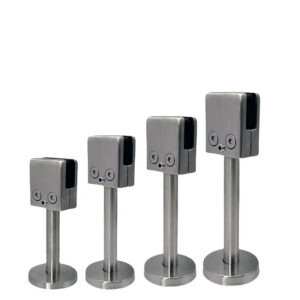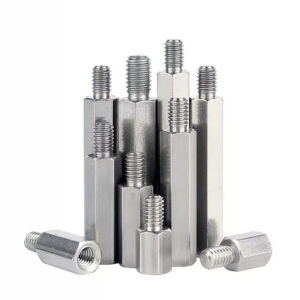Finding newel post systems that actually deliver on promises isn’t easy. Between code compliance headaches, installation delays, and maintenance costs that eat into profits, contractors and distributors need components they can count on. After 23 years manufacturing stainless steel railing hardware, we’ve learned what separates systems that work from those that create problems. Here’s what matters: proven performance, straightforward installation, and components that last.
Complete Newel Post Systems: Components That Integrate
Core System Components
Base Mounting Systems
- Floor-mount bases with adjustable leveling for uneven surfaces
- Wall-mount brackets with universal attachment points
- Surface-mount options for existing structures
- Through-bolt and expansion anchor compatibility
Post Assemblies
- 304/316 stainless construction with 2″, 2.5″, and 3″ diameter options
- Wall thickness specifications meeting structural load requirements
- Modular height adjustments from 36″ to 48″ standard configurations
- Pre-drilled connection points for consistent field assembly
Connection Hardware
- Handrail brackets with secure lock mechanisms
- Cable tensioning systems with adjustment accessibility
- Glass panel clamps rated for wind loads
- Infill mounting points for balusters and panels
Cap and Finishing Components
- Weather-sealed top caps preventing water infiltration
- Brushed and mirror polish options for durability
- Integrated LED housing for code-required lighting
- Custom end treatments for specific applications
Material Selection That Makes Sense
| Material Grade | Best Applications | Corrosion Resistance | Cost Factor |
|---|---|---|---|
| 304 Stainless | Interior, standard exterior | Good for most climates | Standard |
| 316 Stainless | Marine, industrial, coastal | Superior salt/chemical resistance | 15-20% premium |
| 316L Marine | Harsh marine environments | Maximum corrosion protection | 25-30% premium |
The difference matters in real applications. 304 works fine for most commercial interiors and standard outdoor installations. 316 grade justifies the cost in coastal areas, pool decks, and industrial facilities. Marine-grade 316L pays off in direct salt spray environments where replacement costs far exceed the initial premium.
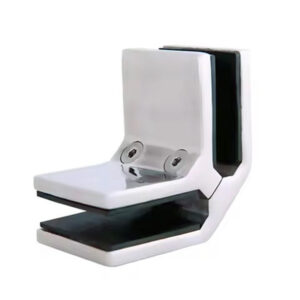
Technical Specifications for Real-World Performance
Load Ratings and Code Compliance
| Application Type | Horizontal Load | Vertical Load | Code Reference |
|---|---|---|---|
| Residential Stairs | 200 lbs concentrated | 300 lbs distributed | IBC 1607.8.1 |
| Commercial Handrails | 250 lbs concentrated | 400 lbs distributed | IBC 1607.8.2 |
| Industrial Platforms | 300 lbs concentrated | 500 lbs distributed | OSHA 1910.29 |
| Marine Applications | 200 lbs + wind loads | 350 lbs + dynamic loads | ASCE 7 |
These aren’t just numbers on paper. Load ratings reflect real-world testing under code requirements. Posts ship with certification documentation, eliminating inspection delays. Mounting hardware includes engineered connection details that structural engineers accept without custom calculations.
Installation Time Estimates
| System Configuration | Installation Time | Required Tools | Complexity Level |
|---|---|---|---|
| Standard Floor Mount | 45-60 minutes | Standard tools | Basic |
| Wall Mount with Brackets | 30-45 minutes | Drill, level, torque wrench | Basic |
| Custom Height Adjustment | 60-90 minutes | Standard tools + cutting | Intermediate |
| Marine Grade Installation | 90-120 minutes | Standard + torque specs | Intermediate |
Real contractors tell us modular design cuts field time significantly. Pre-fabricated components arrive ready for assembly. Connection points align consistently. Hardware packages include everything needed, reducing trips to suppliers.
Proven Applications: Where Systems Deliver Results
Commercial Projects: Efficiency That Counts
Office Buildings and Retail Spaces
Multi-story installations benefit from standardized components. Building teams report 35% faster installation compared to custom fabrication. Modular design allows bulk purchasing while maintaining design flexibility. Standard mounting systems work with most structural conditions without custom engineering.
Healthcare and Educational Facilities
Code compliance runs deeper in these applications. ADA requirements, safety standards, and durability specifications demand proven solutions. Our systems ship with compliance documentation. Maintenance schedules align with facility management requirements.
“Standardized newel post systems cut installation time up to 40% vs. custom fabrication while maintaining code compliance.” —Construction Industry Research Institute
Industrial Applications: Built for Demanding Service
Manufacturing Facilities
Chemical exposure, temperature cycling, and heavy use require 316 stainless minimum. Welded connections outperform mechanical joints in vibration environments. Surface treatments maintain appearance despite industrial cleaning protocols.
Food Processing and Pharmaceutical
Sanitary design prevents contamination buildup. Smooth surface transitions eliminate cleaning difficulties. 316L material handles aggressive cleaning chemicals without degradation.
Marine and Coastal: Where Material Choice Matters
Marina and Dock Systems
Direct salt spray demands marine-grade materials and proper installation techniques. Drainage details prevent standing water. Connection hardware uses compatible materials preventing galvanic corrosion.
Coastal Commercial Properties
Wind loads increase near water. Mounting systems account for dynamic loading. Regular maintenance schedules extend service life significantly.
“Marine grade newel systems show 300% longer service life in coastal applications compared to standard grades.” —Marine Construction Standards Board
Installation Support That Actually Helps
Modular Assembly Advantages
Pre-fabricated components arrive ready for field assembly. Connection points align consistently, eliminating field adjustment time. Standard hardware packages include installation guides with torque specifications and assembly sequences.
Quality Control That Matters
Manufacturing precision ensures parts fit correctly the first time. Dimensional consistency eliminates field modification. Surface treatments apply uniformly, preventing finish variations that create maintenance problems.
Technical Support Based on Experience
Twenty-three years of manufacturing experience means we’ve solved installation problems contractors haven’t seen yet. Technical support includes design assistance, material selection guidance, and troubleshooting help when projects encounter unexpected conditions.
Supply Chain Reliability
Inventory management supports project schedules. Batch coordination ensures finish consistency across large installations. Delivery schedules align with construction timelines, reducing job site storage requirements.
Maintenance Reality: What Actually Happens
Long-Term Performance Expectations
| Environment Type | Inspection Frequency | Expected Service Life | Maintenance Requirements |
|---|---|---|---|
| Interior Commercial | Annual | 20+ years | Cleaning, loose hardware check |
| Exterior Standard | Semi-annual | 15-20 years | Cleaning, adjustment, minor touch-up |
| Marine/Coastal | Quarterly | 10-15 years | Cleaning, hardware inspection, drainage |
| Industrial/Chemical | Quarterly | 12-18 years | Deep cleaning, component replacement |
Real-world service life depends on proper material selection and installation quality. Systems installed correctly require minimal maintenance. Component replacement costs less than complete system failure.
Frequently Asked Questions
How do I select the right stainless steel grade for my application?
Start with environment assessment. Interior and standard exterior applications use 304 stainless effectively. Coastal areas within 1000 feet of saltwater need 316 minimum. Direct marine exposure requires 316L marine grade. Industrial facilities with chemical exposure need material compatibility analysis.
What’s the real difference in installation time between modular and custom systems?
Contractors typically save 30-40% installation time with modular newel post systems. Pre-fabricated components eliminate field fabrication. Standard connection points reduce layout time. Complete hardware packages prevent delays from missing parts.
How do I manage inventory for multiple project types?
Focus on standard configurations that work across 80% of applications. Stock common mounting options and standard heights. Custom components order against specific projects. Esang Metal provides inventory planning support based on regional project patterns.
What installation mistakes cause the most problems?
Inadequate base preparation creates long-term issues. Mixing dissimilar metals causes galvanic corrosion. Over-tightening hardware damages components. Inadequate drainage allows water accumulation. Proper installation training prevents most problems.
How do modular systems compare to fully custom fabrication?
Modular systems cost 15-25% less than custom fabrication while delivering faster installation. Custom solutions make sense for unique architectural requirements or unusual structural conditions. Standard components handle 85% of applications effectively.
What support do you provide for large commercial projects?
Technical support includes design assistance, submittal preparation, and installation guidance. Supply chain management coordinates delivery schedules. Quality control ensures batch consistency. Field support available for complex installations.
Making the Right Choice: Honest Comparisons
System Selection Criteria
Different projects need different approaches. Budget-driven projects benefit from 304 stainless with standard finishes. High-visibility applications justify premium materials and finishes. Marine environments require material upgrades regardless of budget constraints.
Performance vs. Cost Balance
Standard systems deliver proven performance at competitive prices. Premium materials cost more upfront but reduce long-term maintenance. Custom solutions add cost and time but solve unique problems.
“Best newel post specs balance performance with long-term cost efficiency.” —Building Hardware Association
Investment in quality components pays dividends through reduced maintenance, longer service life, and fewer replacement cycles. Twenty-three years of manufacturing experience shows that initial savings on inferior components creates larger costs later.
Choose newel post systems based on actual requirements, not just initial cost. Consider total lifetime value including installation efficiency, maintenance requirements, and expected service life. Partner with manufacturers who understand your business and provide support throughout the project lifecycle.
